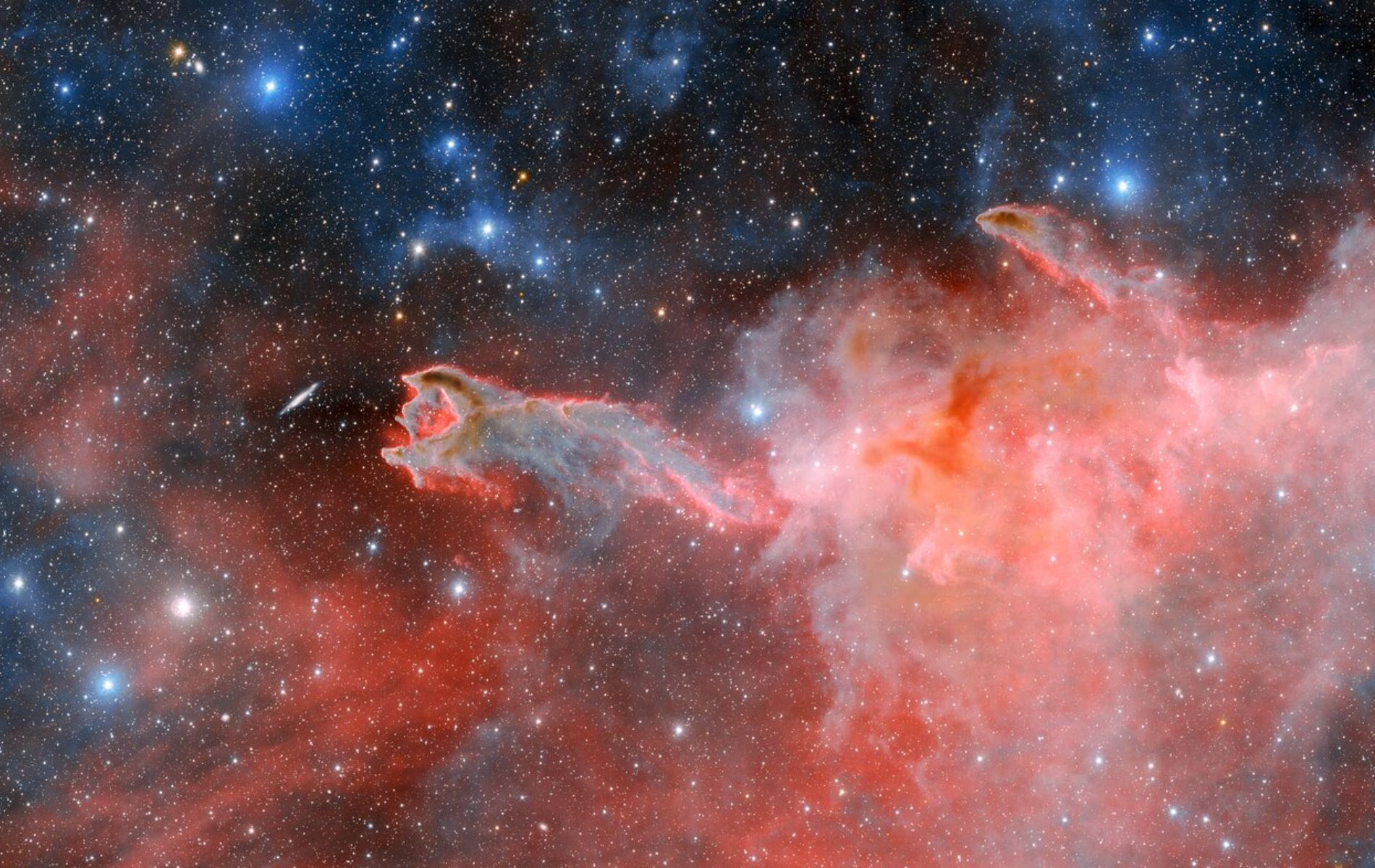It even looks as if the grabbing hand wants to snatch an entire galaxy from the sky. But appearances are deceiving. In fact, the galaxy is about 100 million light-years away, and thus out of reach.
But of course it’s still a great recording. This image was taken by the Dark Energy Camera on the Victor M. Blanco 4-meter telescope in Chile.
Eraser Nebula
In the shot, the camera focused on the Gum Nebula, which is located about 1,300 light-years from Earth. In its center we find CG 4, an object that looks strikingly like a grasping hand.
Ball cloud
However, CG 4 is actually nothing more than a spherical cloud: a dense cloud of gas and dust in which stars are formed. Some of these globular clouds – like CG 4 – have somehow been stripped of some of their material (see box), giving them a long tail that – with a little imagination – looks like a comet.
It is not clear why some spherical clouds take on a comet-like shape. Astronomers have two theories about this. One states that spherical clouds like CG 4 were initially round, but were later disrupted by a nearby supernova explosion. The second theory states that the exquisitely shaped spherical clouds owe their shape to a combination of stellar winds and radiation from nearby hot, massive stars. We don’t know exactly how it works. In the case of CG 4, both theories hold; At the core of the Gum Nebula is a supernova remnant, meaning CG 4 could be affected by a supernova explosion. But it is also possible to find a pulsar in the nebula; This is a rapidly rotating neutron star, which can also influence the shape of CG 4, with its stellar winds and radiation pressure. By the way, CG 4 is not the only comet-shaped globular cloud in the Gum Nebula; At least 31 of these spherical clouds can still be found in the nebula.
Tail
So CG 4 is a spherical cloud with a tail. This tail is about 8 light-years long, which means it takes 8 years for light to travel from one end of the tail to the other. On the tail is a spherical gas and dust cloud about 1.5 light-years across.

Yeshua
Globular clouds with tails – such as CG 4 – have not been known for long; It was only observed by astronomers for the first time in 1976. This is related to the fact that the gas and dust of which it is composed is of a fairly high density and allows almost no light to pass through. The fact of obtaining such a beautiful image of a spherical cloud using a dark energy camera is thanks to a special filter that this camera has, which allows it to detect the weak red glow of ionized hydrogen in the “hand” and along which the “arm” of CG 4 can be detected. This glow is caused by Hydrogen is exposed to radiation from nearby hot, massive stars.
These stars make CG 4 visible. But with its intense radiation, it also destroys the spherical cloud very gradually. However, this does not prevent CG 4, which is still filled with dust and gas, from currently producing several new stars the size of our Sun.

“Coffee buff. Twitter fanatic. Tv practitioner. Social media advocate. Pop culture ninja.”










More Stories
Which can cause an increase in nitrogen.
The Central State Real Estate Agency has no additional space to accommodate Ukrainians.
The oystercatcher, the “unlucky national bird,” is increasingly breeding on rooftops.